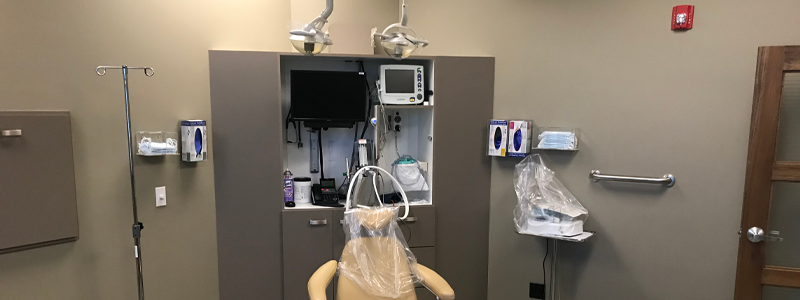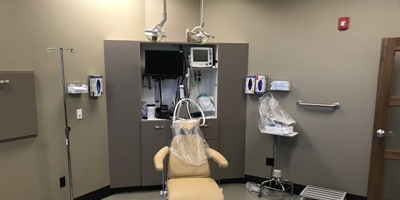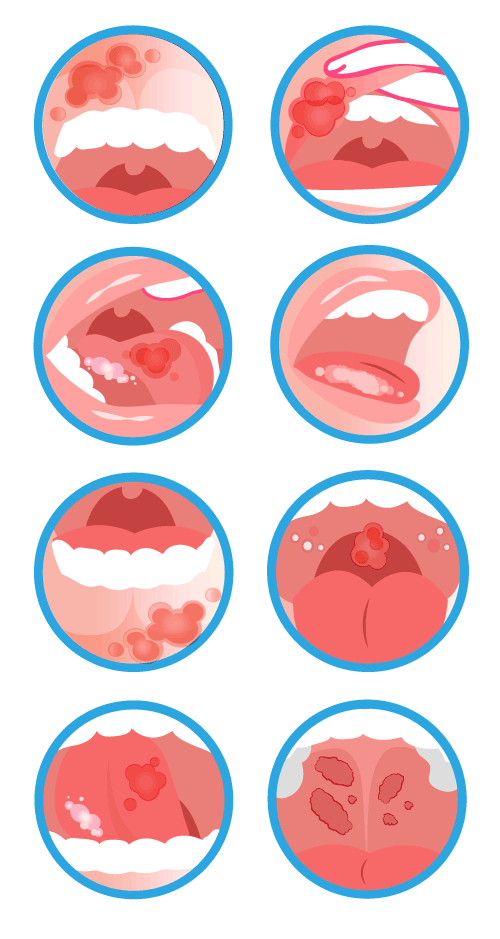


Oral Pathology
What is the pathological process?
The inside of the mouth is normally lined with a special type of skin (mucosa) that is smooth and coral-pink in color. Any alteration in this appearance could be a warning sign for a pathological process. The most serious of these is oral cancer.
Detect Oral Cancer
These changes can be detected on the lips, cheeks, palate, and gum tissue around the teeth, tongue, face, and/or neck. Pain does not always occur with pathology and, curiously, is not often associated with oral cancer. However, any patient with facial and/or oral pain without an obvious cause or reason may also be at risk for oral cancer.
We would recommend performing an oral cancer self-examination monthly and remember that your mouth is one of your body’s most important warning systems. Do not ignore suspicious lumps or sores. Please contact us so we may help.

EXAMPLES OF DIFFERENT PATCHES OR SORES THAT MAY BE PRESENT WITH ORAL DISEASE
What is the pathological process?
The inside of the mouth is normally lined with a special type of skin (mucosa) that is smooth and coral-pink in color. Any alteration in this appearance could be a warning sign for a pathological process. The most serious of these is oral cancer.
Detect Oral Cancer
These changes can be detected on the lips, cheeks, palate, and gum tissue around the teeth, tongue, face, and/or neck. Pain does not always occur with pathology and, curiously, is not often associated with oral cancer. However, any patient with facial and/or oral pain without an obvious cause or reason may also be at risk for oral cancer.
We would recommend performing an oral cancer self-examination monthly and remember that your mouth is one of your body’s most important warning systems. Do not ignore suspicious lumps or sores. Please contact us so we may help.


